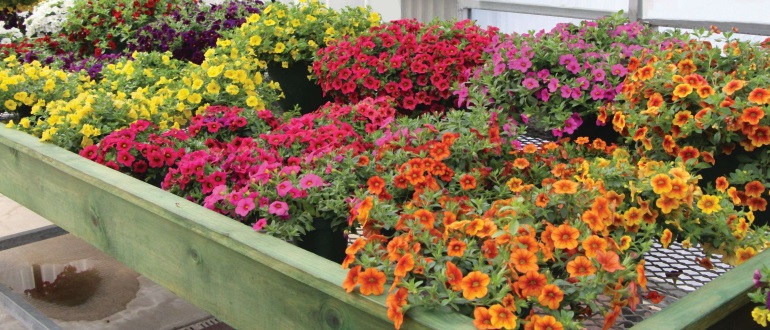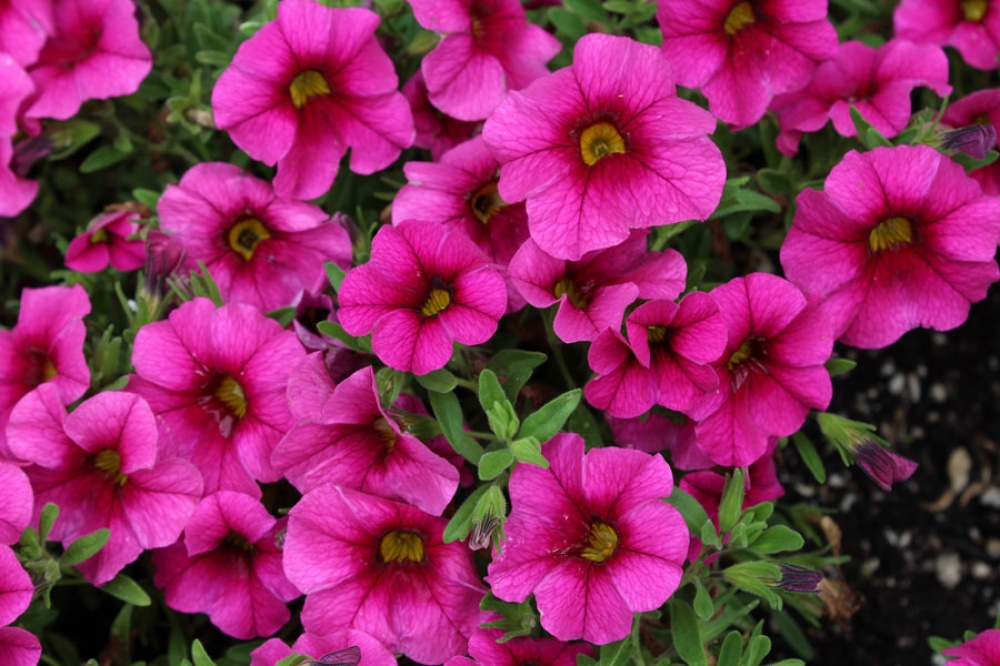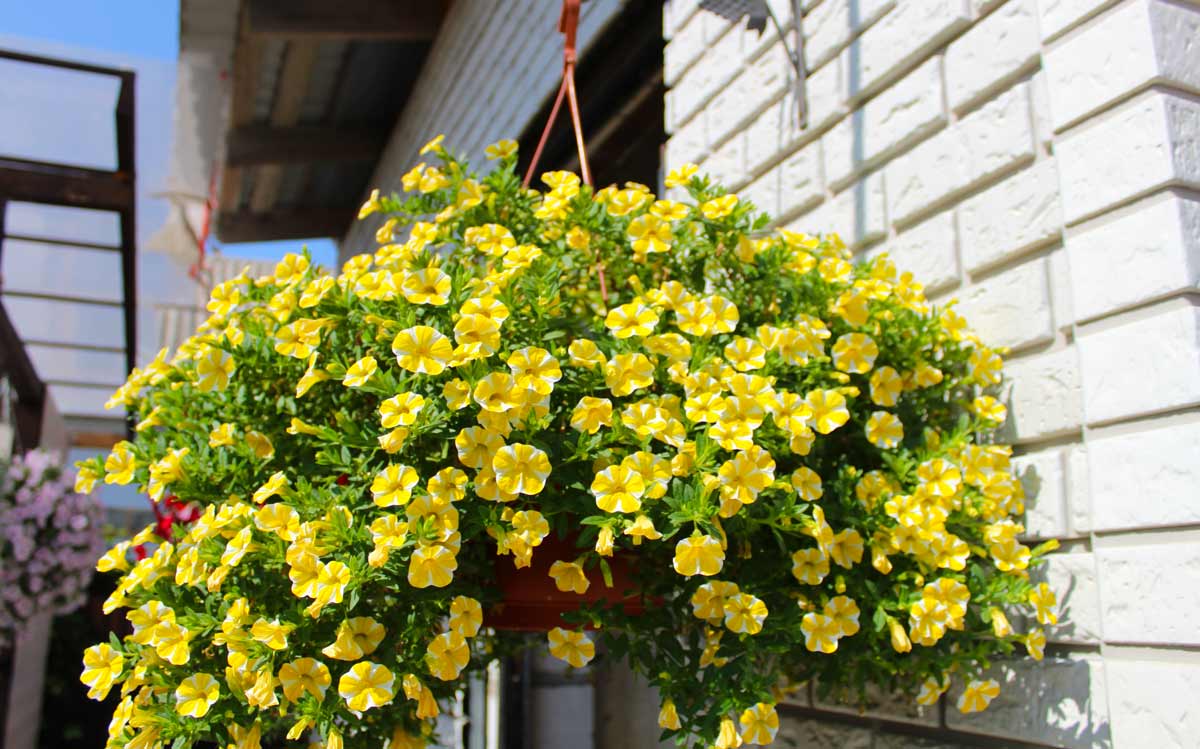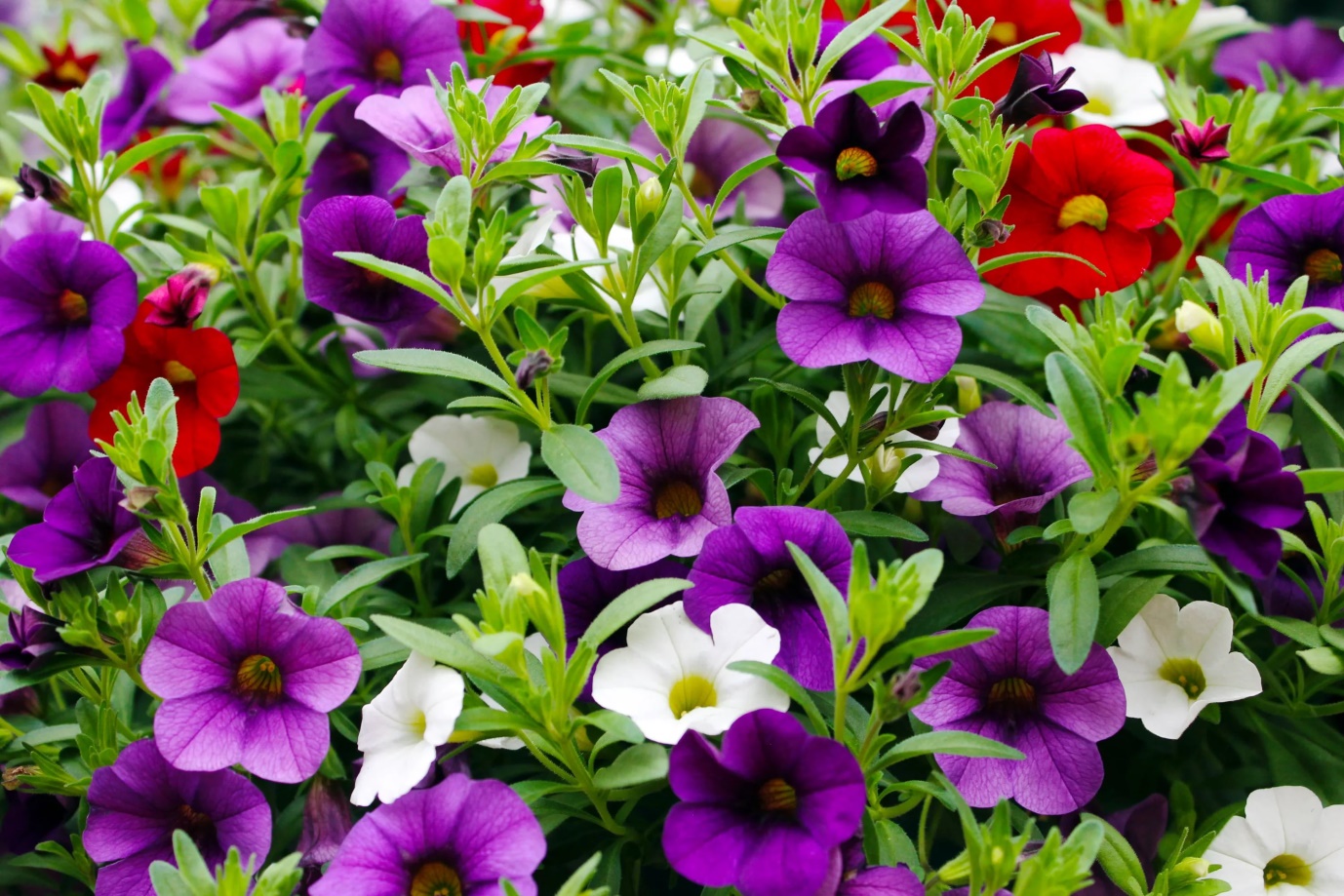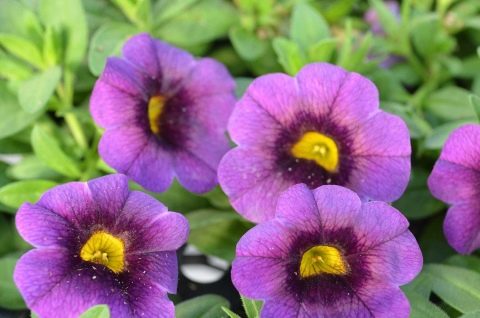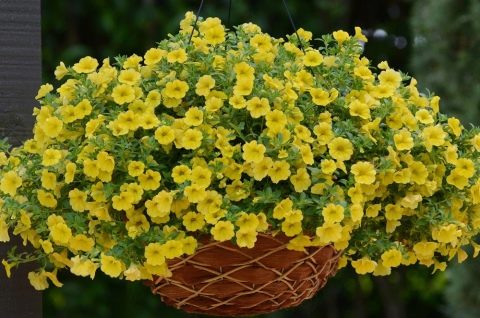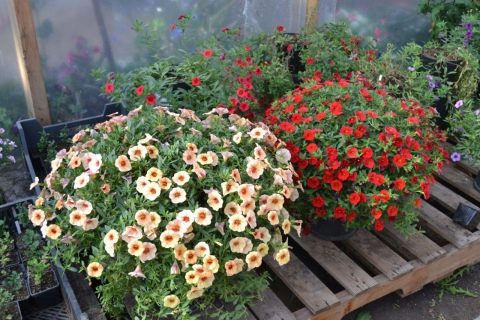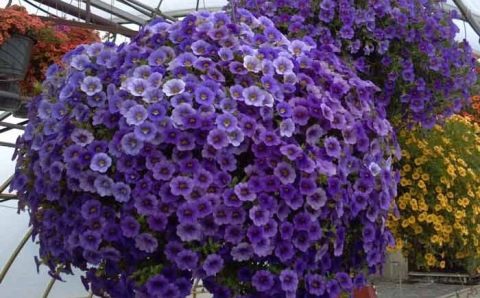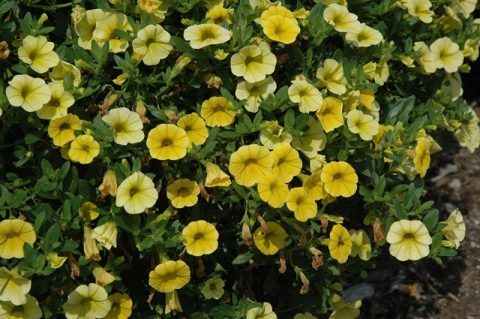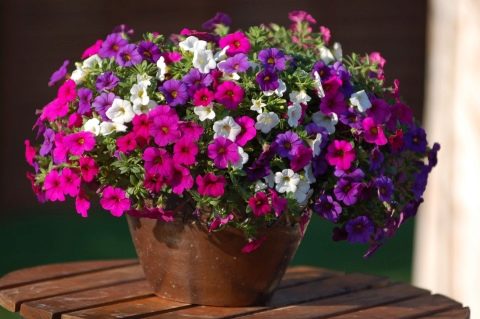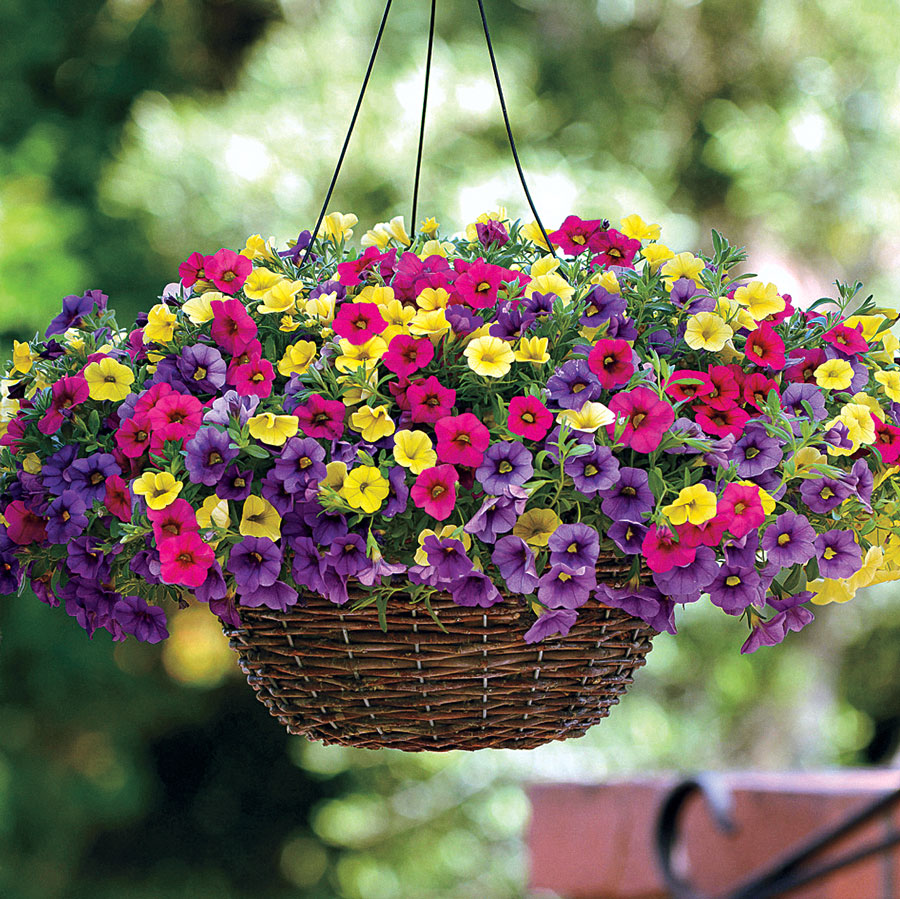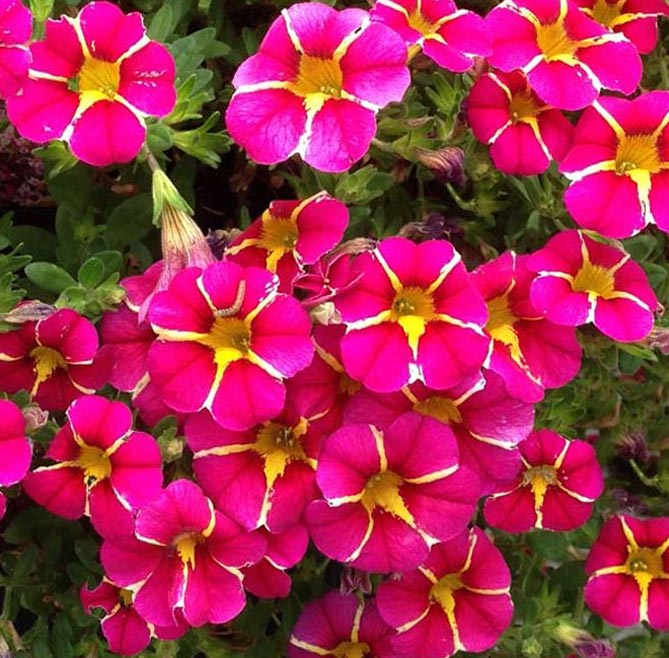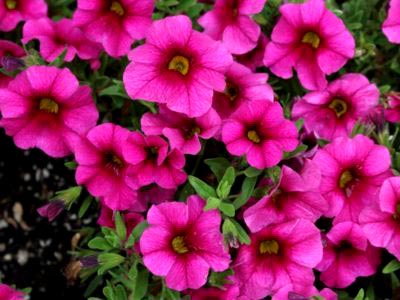Difference between calibrachoa and petunias
Increasingly, flower growers start chic cascades of bells on balconies and terraces. This plant with a strange name has been known for a long time and was listed as a species of the genus Petunia. And after a DNA check by scientists, they found 18 chromosomes in Calibrahoa, and 14 chromosomes in Petunia. Since that time, Calibrahoa has been isolated into a separate genus, unlike Petunia. Not all gardeners and breeders are aware of this. It is no secret that there is a plant on sale under the names "sulfinia", or "ampelous petunia". However, the buds of calibrachoa are small, and their number is many times greater.
What is the difference between surfinia and petunia:
Attention should be paid to the leaves: in calibrachoa, they are 1 cm wide and 3-4 cm long.
The stalk and the lower edge of the leaves are covered with small villi, downy.
The stem is prone to lignification, while in petunia it is thin, strong and elastic, reminiscent of the stem of grass.
Growing and care features
When the seedlings grow to the required size, they are transplanted into pots to decorate the alley, garden or building facade. They wait until May and move the pots with a flower to the street. A plant that has reached a large size requires more space, and it is transplanted. An adult flower needs 3 kg of loose fertilized soil.
The care and cultivation of calibrachoa consists of three principles:
- systematic watering;
- maintaining the shape of the bush;
- fertilizing with fertilizers.
Necessary lighting
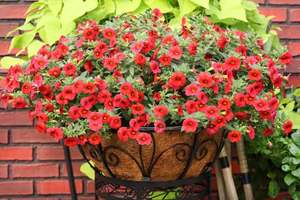 Planters with bells are placed where there is sufficient sunlight. Calibrachoa will not bloom with a lack of lighting. Flowers adore garden plots, terraces and balconies in the south or southeast. But they do not tolerate intense heat. If in summer in July the plant is under the burning sun, it will dry out. For this period, he is hidden in a place protected from the sun.
Planters with bells are placed where there is sufficient sunlight. Calibrachoa will not bloom with a lack of lighting. Flowers adore garden plots, terraces and balconies in the south or southeast. But they do not tolerate intense heat. If in summer in July the plant is under the burning sun, it will dry out. For this period, he is hidden in a place protected from the sun.
Choice of feeding
During brisk growth, calibrachoa needs systematic feeding once a week. For a flowering plant, fertilizers with potassium and phosphorus are used.
Irrigation system
Watering is done carefully. Do not allow excess moisture
Wet soil provokes root rot. In this case, the plant needs frequent spraying in dry hot weather. The procedure is carried out four times a day. At the same time, remember that under the sun, drops of water lead to burns of leaves and petals. Therefore, when the sun is burning, it is undesirable to sprinkle.
Reproduction of calibrachoa
Any variety of Calibrachoa can be propagated in two ways: by seed or cuttings.
Seed propagation: step by step instructions
| Stage | Description |
| Seed preparation |
|
| Soil preparation |
|
| Planting seeds |
|
| Leaving and waiting for shoots |
|
How to propagate by cuttings
Propagation by cuttings is an easier method that allows you to get a plant with qualities that are identical to the mother. The procedures can be carried out at the end of spring or summer. This requires:
- Select the top healthy shoots on the mother bush and cut them off with a sharp blade.
- The stalk should have 3-4 knots and at least 6 leaves, and its length should be about 7 cm.
- The lower leaves must be completely removed.
- To accelerate the formation of the root system, it is better to place the cuttings in a container with a root former.
- After the roots appear, you need to plant the seedlings in a container with nutritious soil.
- After 2 months, the seedlings will be ready for planting in open ground.

1. Choice of cuttings. 2. Removing the lower leaves. 3. Landing in a container with soil
Description of calibrachoa
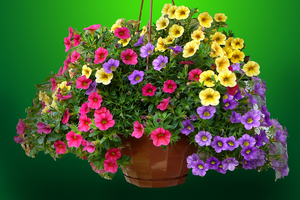 Calibrachoa is a perennial of the nightshade family; in its natural environment, it is distributed in Argentina, Brazil and Uruguay. Gardeners grow hybrids of natural varieties, they are annuals. The plant has long drooping stems, because of which the flower is considered ampelous. In length, the processes reach from half a meter to one and a half meters. The stems of the plant branch out and lignify over time. The leaves are small lanceolate, one centimeter wide, three centimeters long. Stems and leaves are pubescent.
Calibrachoa is a perennial of the nightshade family; in its natural environment, it is distributed in Argentina, Brazil and Uruguay. Gardeners grow hybrids of natural varieties, they are annuals. The plant has long drooping stems, because of which the flower is considered ampelous. In length, the processes reach from half a meter to one and a half meters. The stems of the plant branch out and lignify over time. The leaves are small lanceolate, one centimeter wide, three centimeters long. Stems and leaves are pubescent.
Calibrachoa has flowers like “gramophone”, three centimeters in size. The buds in the natural environment are purple. Hybrids with corollas of white, pink, yellow, scarlet, raspberry, sapphire, coffee color were bred. The veins along the petals are colored in a brighter tone.
Plant varieties
In nature, there is only one tone - lilac. However, breeders managed to develop varieties with raspberry, yellow, pink, sapphire and cherry colors. Gardeners distinguish the following varieties:
- a million bells;
- kablum blue;
- superbells;
- cabaret;
- noah;
- terry;
- sunset;
- kablum yellow;
- bels;
- tequila Sunrise hybrid.
 A million bells. The most popular ampelous variety, reaching up to one meter in height. With bright colors: sapphire, lilac and violet. Propagated by seeds, however, 21 days after planting, watering with a growth stimulator is needed. The variety lives up to the name - it stands out for its intense flowering.
A million bells. The most popular ampelous variety, reaching up to one meter in height. With bright colors: sapphire, lilac and violet. Propagated by seeds, however, 21 days after planting, watering with a growth stimulator is needed. The variety lives up to the name - it stands out for its intense flowering.
Kablum blue, can also be called kablum deep blue hummingbird. The species is popular, as are the million bells. In our region, the variety began to grow one of the first. Propagated by cuttings, looks remarkable in flower beds and flowerpots.
Terry calibrohoa, or mini compact pink double. The variety of the "Double" and "Compact Double" series has several types of different colors: bright yellow (double yellow), pink (double pink), red (double ruby), sapphire (double blue). A typical feature of the variety is the structure of the flower: corollas are full, multi-layered. There is only one minus of terry varieties - a small number of flowers, which is made up for by the beauty of the buds.
Cabaret. The variety contains twelve subspecies. Among them, only plants with white colors, but there are also variations. A flowerpot with a similar flower looks like a ball with a large number of white bells.
 Noah. Contains six color options. Among them there are white and lilac varieties. Compositions from plants of the species look romantic and sophisticated. The buds are painted in a couple of tones. The color of the center of the bud and lobe stripes on the petals differs from the tone of the flower. The branches are up to half a meter long. The plant needs care. Grows well in shaded areas and tolerates little moisture. If you save it for the winter as a perennial, then next year the plant will bloom little. Mostly planted as an annual flower.
Noah. Contains six color options. Among them there are white and lilac varieties. Compositions from plants of the species look romantic and sophisticated. The buds are painted in a couple of tones. The color of the center of the bud and lobe stripes on the petals differs from the tone of the flower. The branches are up to half a meter long. The plant needs care. Grows well in shaded areas and tolerates little moisture. If you save it for the winter as a perennial, then next year the plant will bloom little. Mostly planted as an annual flower.
Bells. The series includes eight plant varieties. Flowers 3.5 cm in size from yellow to burgundy. If you do not cut the branches, then they are stretched up to a meter in length. The plant has few leaves. Bells bloom in May. Lush scattering of bells is not afraid of hail and rain. Withstands fluctuations in the weather. In composition with white petunias, this look makes an alluring duet.
Tequila Sunrise hybrid. Has a catchy color, a plant is grown from grains. Branching processes create a sphere with a volume of 36-40 cm, covered with bells. Blooms constantly with renewing buds. Used in hanging baskets, balcony boxes.
Diseases and pests
Systematic feeding and competent care will prevent the occurrence of diseases. A healthy flower is rarely attacked by pests. If the plant has acquired a painful appearance and the flowering has decreased, find out the cause and eliminate it.
A flower with poor care is exposed to such diseases:
- powdery mildew;
- the leg is black;
- chlorosis;
- root rot.
In addition to fungal ailments, parasites also attack:
- The spider mite pulls out the nutrients contained in the branches and leaves from the flower, which lowers the immune system.
- Aphids bring the flower to wilting.
- Thrips - the larvae of the pest live on the crown, eating the leaves, which is why the bush loses its attractiveness.
- Whitefly - Larvae and moths draw juices from the plant, which slows down development.
Fungicides will help fight these diseases.
Features of growing and care
When growing a plant on a site, it is worth remembering some of the nuances:
- A flower is planted only when the air outside has warmed up to +23 ° C and the threat of frost has passed.
- The landing site should be sunny, especially during the morning hours. The southeast side is best suited for this.
- The flower must be protected from drafts and strong winds.

Calibrachoa outdoors
Calibrachoa is an ampelous plant with cascading long shoots, so it is preferable to grow it in hanging pots, balcony boxes or floor vases. To do this, you must adhere to the following recommendations:
- One plant needs 2-3 kg of soil, which should be loose, slightly acidic or neutral.
- It is necessary to protect the plant from the wind and the scorching sun. To do this, it is worth bringing the flower into the room at lunchtime.
In addition, there are general rules of care, which are presented in the table:
| Procedure | Description |
| Watering |
|
| Top dressing |
|
| Pruning |
|
| Wintering |
|
Growing and caring for calibrachoa is not difficult and very interesting. With the right approach, the plant will delight the owner with its lush flowering all summer long and will fully justify its second name "Million Bells".

